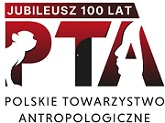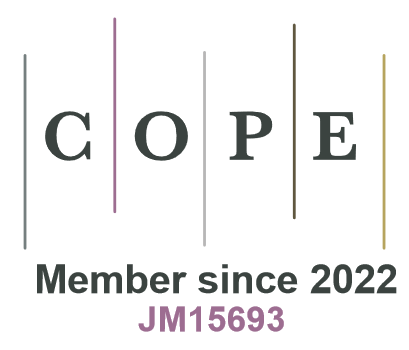Impact of Infectious Disease on Humans and Our Origins
DOI:
https://doi.org/10.18778/1898-6773.85.1.07Keywords:
human evolution, paleogenetics, immune system, anthropogeny, SARS-CoV-2, dengue, Zika, streptococcus, Salmonella, malariaAbstract
On May 16, 2020, the Center for Academic Research and Training in Anthropogeny organized the symposium “Impact of Infectious Disease on Humans and Our Origins”. The symposium aimed to gather experts on infectious diseases in one place and discuss the interrelationship between different pathogens and humans in an evolutionary context. The talks discussed topics including SARS-CoV-2, dengue and Zika, the notion of human-specific diseases, streptococci, microbiome in the human reproductive tract, Salmonella enterica, malaria, and human immunological memory.
Downloads
References
Alisson-Silva F, Liu JZ, Diaz SL, Deng L, Gareau MG, Marchelletta R, et al. 2018. Human evolutionary loss of epithelial Neu5Gc expression and species-specific susceptibility to cholera. PLOS Pathog 14(6):e1007133.
View in Google Scholar
DOI: https://doi.org/10.1371/journal.ppat.1007133
Behnsen J, Perez-Lopez A, Nuccio S-P, Raffatellu M. 2015. Exploiting host immunity: the Salmonella paradigm. Trends Immunol 36(2):112–20.
View in Google Scholar
DOI: https://doi.org/10.1016/j.it.2014.12.003
Carlin AF, Uchiyama S, Chang Y-C, Lewis AL, Nizet V, Varki A. 2009. Molecular mimicry of host sialylated glycans allows a bacterial pathogen to engage neutrophil Siglec-9 and dampen the innate immune response. Blood 113(14):3333–6.
View in Google Scholar
DOI: https://doi.org/10.1182/blood-2008-11-187302
Deng L, Song J, Gao X, Wang J, Yu H, Chen X, et al. 2014. Host adaptation of a bacterial toxin from the human pathogen Salmonella Typhi. Cell 159(6):1290–9.
View in Google Scholar
DOI: https://doi.org/10.1016/j.cell.2014.10.057
Elong Ngono A, Vizcarra EA, Tang WW, Sheets N, Joo Y, Kim K, et al. 2017. Mapping and role of the CD8+ T cell response during primary Zika virus infection in mice. Cell Host Microbe 21(1):35–46.
View in Google Scholar
DOI: https://doi.org/10.1016/j.chom.2016.12.010
Gagneux P. 2021. Anthropogeny. IN: N Saitou, editor. Evolution of the Human Genome II: Human Evolution Viewed from Genomes. Tokyo: Springer. 3–27.
View in Google Scholar
DOI: https://doi.org/10.1007/978-4-431-56904-6_1
Gagneux P, Cheriyan M, Hurtado-Ziola N, van der Linden ECMB, Anderson D, McClure H, et al. 2003. Human-specific regulation of α2–6-linked sialic acids. J Biol Chem 278(48):48245–50.
View in Google Scholar
DOI: https://doi.org/10.1074/jbc.M309813200
Gilbert NM, Foster LR, Cao B, Yin Y, Mysorekar IU, Lewis AL. 2021. Gardnerella vaginalis promotes group B Streptococcus vaginal colonization, enabling ascending uteroplacental infection in pregnant mice. Am J Obstet Gynecol 224(5):530.e1–530. e17.
View in Google Scholar
DOI: https://doi.org/10.1016/j.ajog.2020.11.032
Harper KN, Zuckerman MK, Harper ML, Kingston JD, Armelagos GJ. 2011. The origin and antiquity of syphilis revisited: an appraisal of Old World pre-Columbian evidence for treponemal infection. Am J Phys Anthropol 146(S53):99–133.
View in Google Scholar
DOI: https://doi.org/10.1002/ajpa.21613
Joshi NS, Cui W, Chandele A, Lee HK, Urso DR, Hagman J, et al. 2007. Inflammation directs memory precursor and short-lived effector CD8+ T cell fates via the graded expression of T-bet transcription factor. Immunity 27(2):281–95.
View in Google Scholar
DOI: https://doi.org/10.1016/j.immuni.2007.07.010
Kaech SM, Tan JT, Wherry EJ, Konieczny BT, Surh CD, Ahmed R. 2003. Selective expression of the interleukin 7 receptor identifies effector CD8 T cells that give rise to long-lived memory cells. Nat Immunol 4(12):1191–8.
View in Google Scholar
DOI: https://doi.org/10.1038/ni1009
Key FM, Posth C, Esquivel-Gomez LR, Hübler R, Spyrou MA, Neumann GU, et al. 2020. Emergence of human-adapted Salmonella enterica is linked to the Neolithization process. Nat Ecol Evol 4(3):324–33.
View in Google Scholar
DOI: https://doi.org/10.1038/s41559-020-1106-9
Majander K, Pfrengle S, Kocher A, Neukamm J, du Plessis L, Pla-Díaz M, et al. 2020. Ancient bacterial genomes reveal a high diversity of Treponema pallidum strains in early modern Europe. Curr Biol 30(19):3788–803.e10.
View in Google Scholar
DOI: https://doi.org/10.1016/j.cub.2020.07.058
Miller EA, Beasley DE, Dunn RR, Archie EA. 2016. Lactobacilli dominance and vaginal pH: why is the human vaginal microbiome unique? Front Microbiol 7:1936.
View in Google Scholar
DOI: https://doi.org/10.3389/fmicb.2016.01936
Mugabe VA, Borja LS, Cardoso CW, Weaver SC, Reis MG, Kitron U, Ribeiro GS. 2021. Changes in the dynamics of dengue incidence in South and Central America are possibly due to cross‐population immunity after Zika virus epidemics. Trop Med Int Health 26(3):272–80.
View in Google Scholar
DOI: https://doi.org/10.1111/tmi.13526
Okerblom JJ, Schwarz F, Olson J, Fletes W, Ali SR, Martin PT, et al. 2017a. Loss of CMAH during human evolution primed the monocyte–macrophage lineage toward a more inflammatory and phagocytic state. J Immunol 198(6):2366–73.
View in Google Scholar
DOI: https://doi.org/10.4049/jimmunol.1601471
Okerblom J, Varki A. 2017b. Biochemical, cellular, physiological, and pathological consequences of human loss of N-glycolylneuraminic acid. Chembiochem 18(13):1155–71.
View in Google Scholar
DOI: https://doi.org/10.1002/cbic.201700077
Pedroso C, Fischer C, Feldmann M, Sarno M, Luz E, Moreira-Soto A, et al. 2019. Cross-protection of dengue virus infection against congenital Zika syndrome, northeastern Brazil. Emerging Infect Dis 25(8):1485–93.
View in Google Scholar
DOI: https://doi.org/10.3201/eid2508.190113
Pyrc K, Dijkman R, Deng L, Jebbink MF, Ross HA, Berkhout B, van der Hoek L. 2006. Mosaic structure of human coronavirus NL63, one thousand years of evolution. J Mol Biol 364(5):964–73.
View in Google Scholar
DOI: https://doi.org/10.1016/j.jmb.2006.09.074
Rabinovich RN, Drakeley C, Djimde AA, Hall BF, Hay SI, Hemingway J, et al. 2017. malERA: an updated research agenda for malaria elimination and eradication. PLoS Med 14(11):e1002456.
View in Google Scholar
DOI: https://doi.org/10.1371/journal.pmed.1002456
Reed DL, Light JE, Allen JM, Kirchman JJ. 2007. Pair of lice lost or parasites regained: the evolutionary history of anthropoid primate lice. BMC Biol 5:7.
View in Google Scholar
DOI: https://doi.org/10.1186/1741-7007-5-7
Tortelli BA, Lewis AL, Fay JC. 2021. The structure and diversity of strain-level variation in vaginal bacteria. Microb Genom 7(3):000543.
View in Google Scholar
DOI: https://doi.org/10.1099/mgen.0.000543
Wertheim JO, Smith MD, Smith DM, Scheffler K, Kosakovsky Pond SL. 2014. Evolutionary origins of human herpes simplex viruses 1 and 2. Mol Biol Evol 31(9):2356–64.
View in Google Scholar
DOI: https://doi.org/10.1093/molbev/msu185
Winzeler EA. 2008. Malaria research in the post-genomic era. Nature 455(7214):751–6.
View in Google Scholar
DOI: https://doi.org/10.1038/nature07361
Yildirim S, Yeoman CJ, Janga SC, Thomas SM, Ho M, Leigh SR, et al. 2014. Primate vaginal microbiomes exhibit species specificity without universal Lactobacillus dominance. ISME J 8(12):2431–44.
View in Google Scholar
DOI: https://doi.org/10.1038/ismej.2014.90
Published
How to Cite
Issue
Section
License

This work is licensed under a Creative Commons Attribution-NonCommercial-NoDerivatives 4.0 International License.








